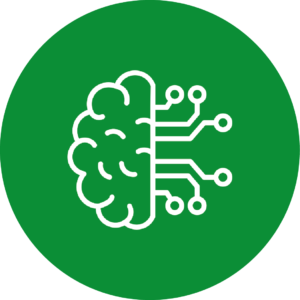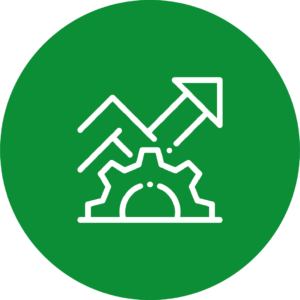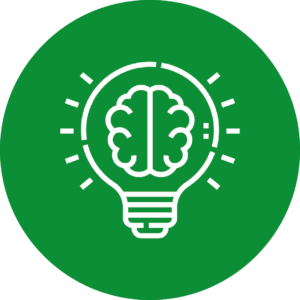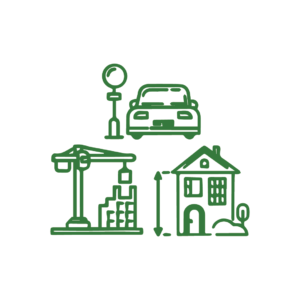THEMATIC TABLES AND WORKING GROUPS
BUSINESS DEVELOPMENT THEMATIC TABLE
Coordination activities are promoted among industries, research organizations and government departments to launch medium- and long-term initiatives of general interest.
The objective is also achieved through the creation of consortia working on projects of pre-competitive interest and co-financing activities ( objective shared with the qualifying dimension No. 5 “Financial Sustainability” of the project “Consolidation and National and International Integration of the Lombard Mobility Cluster).Specifically included in this Thematic Group are the following Working Groups (WG):
ENVIRONMENTAL SUSTAINABILITY THEMATIC TABLE
Reduction of the ‘carbon footprint’ with reference to vehicles, transportation and related materials is discussed.
They are objects of interest:
- The reduction of vehicle motion resistance (and in particular the reduction of rolling resistance);
- The introduction of high-efficiency transmissions (hybrid or unconventional);
- The reduction of ‘well-to-wheel’ emissions by improving the efficiency of engines (of all types);
- The use of alternative fuels;
- The use of renewable energy sources;
- The use of electric power systems (motors, generators, accumulators, distribution) for vehicles and transportation, including infrastructure;
- The development of knowledge and technology for halving the carbon footprint of road mobility.
In particular, the following Working Groups (WG) fall under this Thematic Group:
THEMATIC TABLE MATERIALS, LIGHTENING, SPORTS
The use of conventional (particularly metallic) materials is promoted by exploiting new manufacturing technologies based on considerations-metallurgical, topological/morphological, functional, reliability, economic and other where relevant. Innovative architectures of vehicle systems and sub-systems are being studied, with reference to overall mass reduction. The study of hybrid structures is addressed, with special reference to polymer/metal joining and concept design of lightened structures. Advanced materials and bio materials for vehicle lightweighting.
Unconventional building materials, i.e., those whose formulation retains aspects of innovativeness (nanomaterials, polymers/elastomers, biomaterials) are targeted.
More specifically, it includes the development of new advanced materials, nanomaterials, bio-materials, and recycled materials with equivalent or superior performance to conventional materials for the introduction of new products and processes with greater environmental and social sustainability from a life-cycle perspective.
As for nanomaterials, fullerenes, nanoparticles and sol-gel are considered. Thermoplastic or thermosetting polymers are discussed with reference to the possible combination with other materials (structural composites). Elastomers are discussed with reference to physical characteristics and compounds.
Also included are new materials that enable lighter products and green material technologies for energy efficiency and vehicle performance and safety.
Position papers from Members who authorize their publication are collected.
The perception of an area’s technological excellence can also be linked to sports results.
In Lombardy there are automotive component manufacturers or other players active in boating or centers for testing or centers for motorsport practice (Autodromo di Monza) that represent global excellences, although not recognized as excellences of the territory in which they primarily operate.
Research carried out in motorsport must be able to be transferred to applications of industrial interest related to safety and sustainability.
Complex systems characterized by integration of different engineering skills are the subject of the projects.
IN-VEHICLE SENSOR THEMATIC TABLE & CONNECTED VEHICLES
The innovation process sees the transportation medium as a part, a key piece, of an ecosystem of services.
The quality of services and their content will increasingly be a function of the information collected, the reference context (people, transportation, vehicles, traffic, territory, infrastructure managers) and the information processing capacity. Service providers will therefore need to be able to interact with all the players that make up the mobility environment, from vehicle production companies to people to bring added value. It is expected that by 2020, one in five vehicles will be “connected,” that is, equipped with semi-automated systems capable of dialoguing with services and infrastructure in the logic of IoT “Internet of Things.”
Subject of interest in general are all projects for collecting, processing data and returning them to stakeholders and in particular:
- Data collection projects aimed at improving services to people;
- data collection and analysis projects for communication between vehicles, vehicles and infrastructure, people and vehicles, people and infrastructure, aimed at improving services;
- predictive analytics and big data projects aimed at optimization, deployment and maintenance of automotive-related components;
- The study of projects to ensure high standards of cybersecurity in the interaction between vehicles, vehicles and infrastructure, people and vehicles, and people and infrastructure.
They are treated:
- Research projects aimed at developing vehicle-infrastructure, infrastructure-vehicle and vehicle-infrastructure-vehicle communication systems for road safety;
- systems for monitoring vehicle and transportation status, with the aim of increasing safety, comfort and sustainability.
They are considered the Intelligent Transport Systems (Sensoring, RFID -Radio Frequency IDentification, smart re-routing, energy scavenging), with reference to passenger and/or freight traffic.
They are objects of interest:
- Embedded systems; data fusion algorithms;
- machine vision systems;
- radar systems and any other means of data transmission within the vehicle and between the vehicle and the outside world;
- ADAS;
- self-driving vehicles;
- V2I, I2V, V2V-based traffic data management systems;
- The development of on-board sensory systems;
- Infrastructure for data collection, processing and retransmission to vehicles;
- i Asphalt Condition Detection Systems for road management/maintenance based on ordinary motor vehicles suitably sensorized (floating car data);
- Vehicle on-board speed limiters according to the available grip along the route.
SAFETY THEMATIC TABLE*
Security is an extremely sensitive issue that has a major impact on the lives of all of us. This subject area includes insights and information research regarding activities related to road, sea and rail transport safety.
The safety of transport systems, with reference to vehicles, infrastructure, traffic (freight or passenger), and the development of integrated approaches to global road transport safety (vehicle integrated with infrastructure) is discussed. Topics related to:
- Active and preventive vehicle safety (tire-road contact, suspension and transmission, braking);
- the in-vehicle systems;
- ITS security;
- The safety of driver aid systems in their various aspects;
- passive security with or without intelligent systems to increase it, security of transportation systems;
- The transportation of dangerous goods.
Also new products and processes to reduce environmental impact and noise and increase safety.
*Activated soon
INTERMODALITY, NETWORK, CO-MODALITY AND LOGISTICS THEMATIC TABLE
Promoting intermodality and co-modality will enhance all modes of transportation, especially those that may be underutilized. Intermodal transport is a freight and passenger transport system based on the combination of different means of transport to cover the route from a place of departure ( place of shipment ) and a place of destination.
Intermodal transport was born in the early twentieth century (neo-industrial transport) and developed in the second half of the twentieth century (post-industrial transport) as a result of the international trade of goods (globalization) and the presence of different communication routes (sea, sky, land) available. Intermodal transport is especially developed in medium- to long-distance transport.
The goods are loaded into special standard containers, called containers, to enable them to be transported by road (TIR), rail (freight train), sea (cargo) or air (cargo planes).
The intermodal transportation system provides significant advantages in terms of efficiency (transportation cost) and effectiveness (capillarity) over the old modal transportation system based, instead, on a single means of transportation.
Within the table is treated the transportation of goods and people.
These are development issues: efficiency, sustainability and transportation safety. Intermodality, co-modality and intelligent transportation are paradigms inherent in development activities.
The logistics of transportation nodes and arcs is the reference discipline for framing research activities. ICT technologies significantly pervade many transportation-related activities.
















